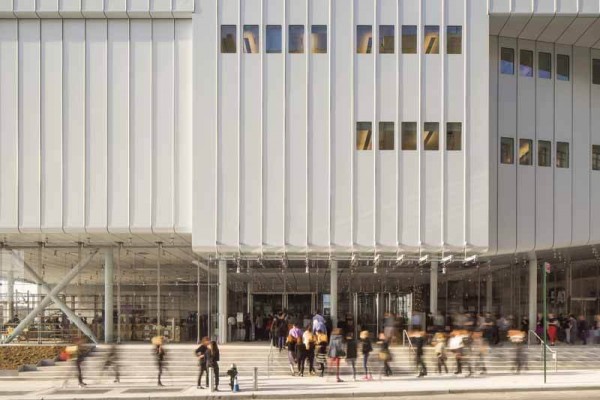An experiential tour of the Whitney Biennial 2017.
A Body of Work
ENTER
Pastel light filters through the stained glass windows. I stop. Figures, chained; glimmering red crowns, flowing white pools. Films rattle through projectors rolling through each of their stories on blank walls, the paths of their light clearing the only empty space in the large room. I cannot see his face: there are smears and slashes of paint, but no lips, no eyes, no nose. I close my eyes in horror and step back, the shock visceral. Choices in stark color against a black screen, click and seal your fate. Or, opt out, turn around, and walk away. Can you touch it? Should you touch it? Can art be touched? Doesn’t the circumscription of art as sacred preclude ignorant fondling? I once read it’s easier for conservators to stitch a hole than mask an oily fingerprint. But if there is no canvas, can it be repaired?
PORPENTINE CHARITY HEARTSCAPE
Absorbed in a screen, you are faced with choices. You beg in a virtual landscape, where impossible realities live. “There are fountains and flies,” the text reads. In another digital life, you serve the Empress, with her fierce horns and slithering appendages. Lacking an image yet drowning in imagery, you feel helpless behind the safety of the screen. For a few moments, you forget that you are sitting in a dark room, on a rolling desk chair with ergonomic contours, surrounded by strangers in neighboring cubicles. The hum of the light fixtures envelop you, matched with the gentle, ethereal tones of singing machines. It is poetry.
Begscape and With Those We Love Alive, Porpentine Charity Heartscape (2014)
ROOT SEQUENCE. MOTHER TONGUE,
among the last
to bloom the dogwood
smooth like strings
of ash colored honey stretched
thin reaching up
for their opening into white
silk fanned about clusters
of sunny pollen
Root Sequence. Mother Tongue, Asad Raza (2017)
A VERY LONG LINE
We are enveloped. Cocooned in disorientation. Wrapped in the slats of fences and
trucks/trees/dirt/garages/parked cars/weeds/clouds/roads/skies
split from ourselves as we move left and right converging and diverging at corners that don’t quite meet where we believe them to.
A Very Long Line, Postcommodity (2016)
PACIFIC RED II
Perception is tinted red as the observer is drawn into canvassing the world through the hue of the cubes, rejecting all other wavelengths and casting a coloured shadow on what we know.
How do we draw the line between the constructed and the natural? Bell’s six laminated cubes toe this binary as he draws us into doubts about the media of this exhibit – is it glass? Is it light? Bell questions our assumptions about the exhibit as a static, man-made object by allowing nature to vary what is presented and what is observed.
Pacific Red, Larry Bell (2017)
SALON-SALA-SALON
What is space? What is the time it takes to cross the distance? Were it not for distance, would spaces stack, like blocks (or buildings) on top of each other? So that one could pass from here (to there) without going anywhere? The students, the teachers, the users of this space, are but an idea. Soon they will cross time (and space) to be here. The novelty for each, to pass through space (to take time), just to exists in a new environment, makes each one a traveler, a traverser of the world, like the many before him.
Salón-Sala-Salón, Chemi Rosado-Seijo
FINALE
Inside, observers mill around in packs, all professional speculators and critics. The balconies almost seem like a world apart. There are suspended threads of black wound around papery fuschia, knotted up. Separated from the air of the city by glass thin as breath. There are lives here, layered. Chairs and tables, and you can almost hear the beeping of a life support machine on one of the floors. Which lives? To whom does art belong? It has a creator, but a different caretaker, and it’s for the audience anyway, right?
